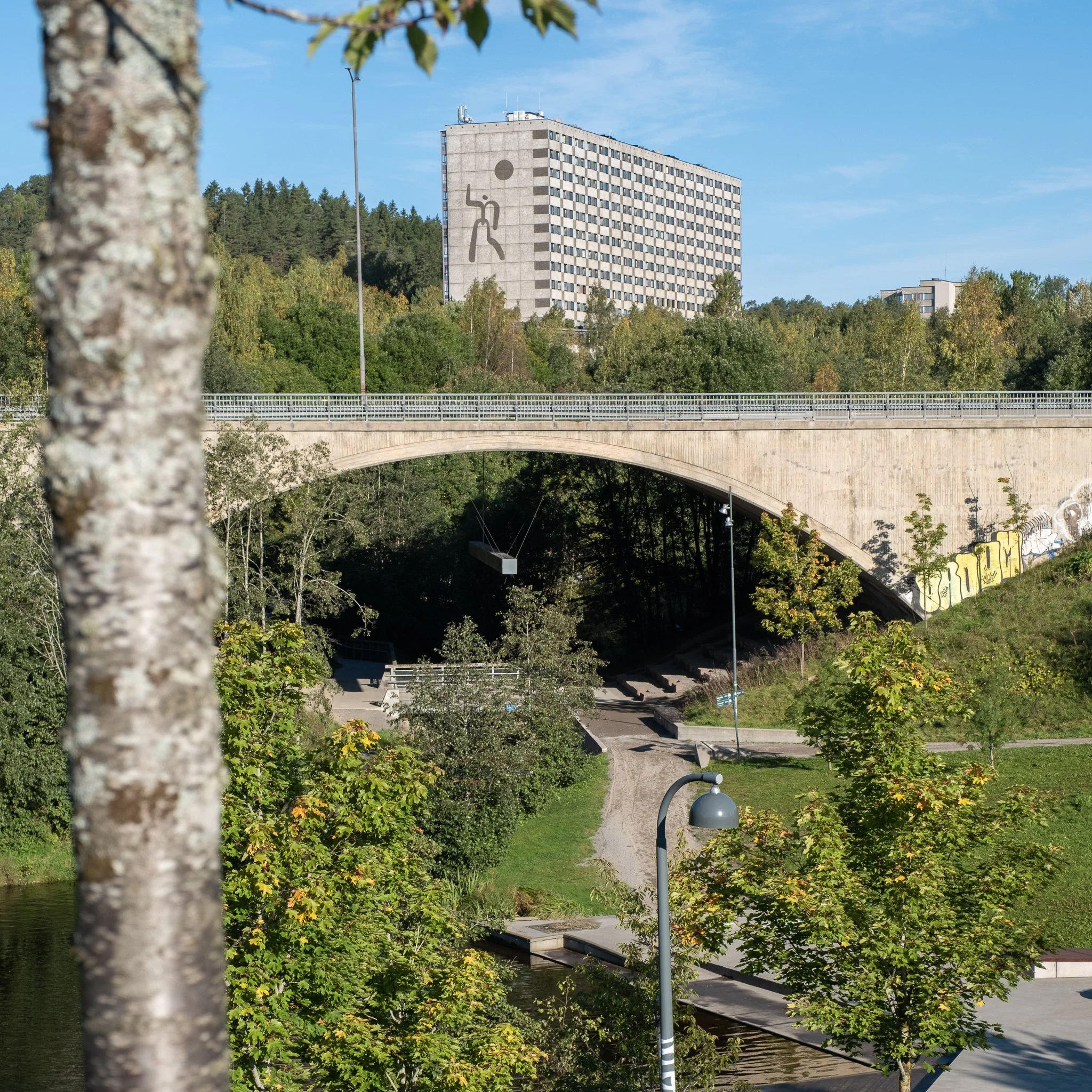grorud
Oslo, Norway
Looking across Grorud Park along the river Alna, bridged by Trondheimsveien, the national highway. In the background of the large housing blocks at Ammerud, a part of a larger planned residential area from the 1950s and 1960s for 6,000 people with a variety of housing types, including mid-rise and high-rise buildings and clustering of atrium houses.
The park along the Alna River was completed in 2013 and combines ecological and sustainable design. The park is close to the metro and Grorud centre, a shopping complex and mixed urban area initially developed in the 1960s.
Grorud
Grorud district is in the outer city east, adjacent to the city’s boundary and forested area to the north.
Grorud is a relatively small district, the smallest district by population. Grorud, in the northeastern part of the city, is bounded by the protected forested area surrounding the city to the North.
Grorud has a long history as an industrial area, including sawmills, mines, and quarries. Early 20th-century residential development was linked to the local industry. Urbanization developed in tandem with industrialization. Today, housing is varied, with atrium houses and high-rise buildings on Ammerud, residential areas towards Lillomarka, and low- and high-rise blocks around single-family houses and old farms.
Grorud is the site of visionary developments, planned communities, and satellite cities built after the Second World War connected to the city and the amenities for rich community life. These Norwegian "drabant" towns are based on functionalist models shaped by distinctive local conditions and culture. Romsås, for example, is a drabant town in the north-east of Grorud, built in the 60s and 70s with access to the forests and transportation.
Oslo municipality has targeted Grorud as part of Norway's largest financial investment in urban renewal. Progressive plans are underway in Grorud to build up the community and local identity by deploying the process of urban development as tactical urbanism to contribute to a well-functioning neighbourhood and improve living conditions. This includes a significant economic "lift" for the district of Grorud with the plan to make it greener and more vibrant.
Grorud Park is a hallmark development of these community investments. The park offers spaces for sports, play, recreation, socializing and cultural activities for a diverse population along the Alna River. The park combines ecological measures and sustainable design.











